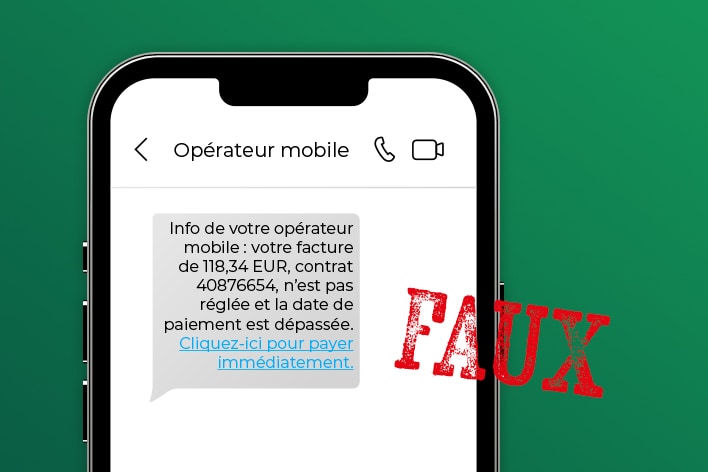- Open an account
- Log in
- My Easy Banking
-
-
Personal information
-
My documents
-
Privacy
-
Settings
-
Logout
-
Daily banking

Bank accounts

Bank cards

Payments

Save and invest

Invest

Save and invest with a goal

Our investment solutions


Financing a property

Finance a vehicle


Family protection

Home protection

Mobility protection

By your side

Specific approach

Online and mobile banking

You are on the version of the site for
Daily banking
Bank accounts
Bank cards
Payments
Our advice
Did you know?

Save and invest
Invest
Save and invest with a goal
Our investment solutions
Our advice
Did you know?

Financing a property
Finance a vehicle
Fund a project
Our advice
An EPC certificate?

Family protection
Home protection
Mobility protection
Our expertise
An EPC certificate?

By your side
Specific approach
Online and mobile banking
Contact us
Did you know?

-
How can you thwart phishing attempts?
We live in a hyper-connected world where technology offers endless benefits. However, this also has its drawbacks, particularly the increased risk of online fraud. In 2022, Belgians suffered a massive €39.8 million of losses solely through phishing, a significant increase compared to the €25 million seen in 2021.
The techniques used by fraudsters are varied and often sophisticated: they pose as government departments, service providers or other reputable entities. The goal is clear: to deceive you and get you to reveal sensitive information or carry out an unwanted transaction.
Some examples…

Fraudsters often usurp the identities of well-known companies and even government agencies. They may impersonate your energy provider to lure you with a fake special offer, while others may claim to be your mobile operator and alert you to an allegedly expired subscription.
At first glance, the email or text message appears genuine. However, upon closer inspection, you may notice inconsistencies, particularly in the sender's email address or login link. These two elements should be the first things you scrutinise in order to thwart a phishing attempt. Always be vigilant!
How to protect yourself
- Distinguish between genuine and fake: check the sender's full address by hovering over it without clicking. Similarly, in the body of the message, if you see a button, a link, etc., hover over it without clicking. The complete URL should appear, allowing you to check whether it’s legitimate. Watch the video below to find out more.
- Educate yourself: learn to identify phishing attempts. To do this, visit surfersanssoucis.safeonweb.be, where you’ll find tips and tricks to help you use the internet safely. It only takes a few minutes!
- Protect your data: remember that fraudsters are primarily trying to obtain your confidential data. If you’re asked to provide one of your codes, an item of identification element, an M1 or M2 signature, etc., it’s probably a scam attempt.
- Assess the tone of the message: does the content seem clear, direct and urgent? Do you feel pressured to act quickly? Fraudsters often use urgency as a strategy to push you to act without thinking. Always take the time to analyse the message carefully.
How to respond to fraud
Have you received a suspicious message?
Have you received a message from a supplier or an official body urging you to click on a link or log in to your online banking? Don’t do it!
To help avoid fraud and prevent others becoming victims, immediately forward the email or send a screenshot of the text message to suspect@safeonweb.be.
Do you think you may have disclosed confidential data?
- Check your recent transactions to identify suspicious transactions.
- Contact the Easy Banking Centre (Monday to Friday from 7am to 10pm and Saturday from 9am to 5pm). Call 02 762 90 00.
- Outside the Easy Banking Centre's opening hours and only in the event of suspected fraud, contact 02 433 43 80. An easy way to contact the Easy Banking Centre or the dedicated fraud number is to go through the Easy Banking App: click on "Help and Contact" under the "Communication" tab.
- Immediately block all your bank cards via Card Stop at 078 170 170 or block your debit card(s) via the Easy Banking App.
- File a police report and send a copy of the report to your BNP Paribas Fortis advisor.
- Check, via Easy Banking Web (Settings > Access to our apps) or Easy Banking App (Settings > Security > Devices with our apps), the devices on which your banking app has been installed and remove any suspicious or unknown ones.
You’ll find more information on Safeonweb.be and the website of the Federation of the Belgian Financial Sector.
Finally, to protect yourself from the dangers of phishing and use the web with confidence, explore our tips and tricks by clicking on the link below.
Help
Daily banking
Save and invest
© 2025 BNP Paribas Fortis


